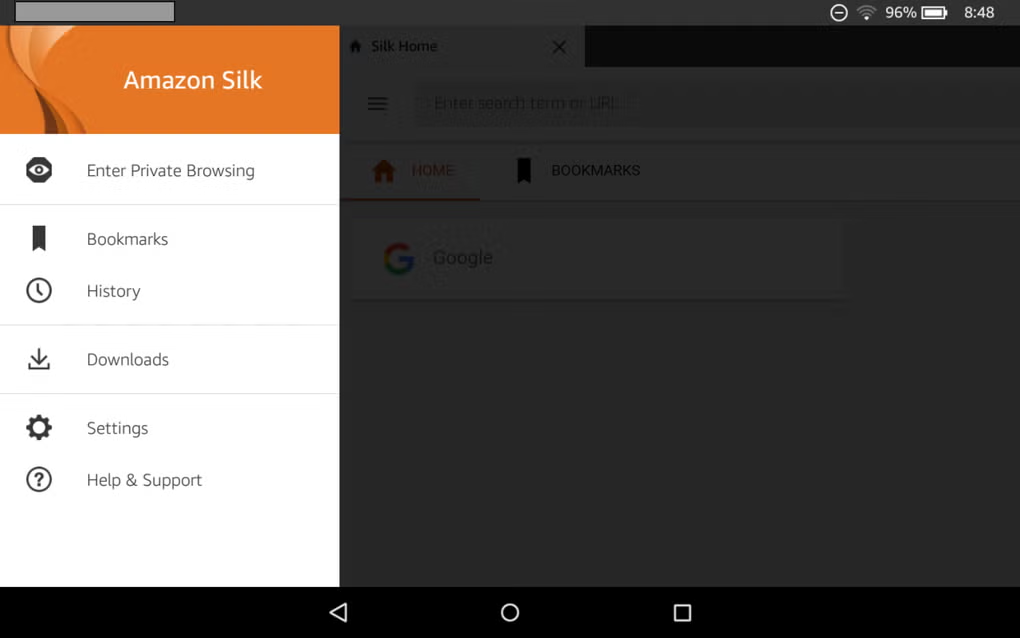

That would address the privacy and security problems that could arise from using the software, but then you’ll lose all the advantages of processing browser activity in the cloud.Īnother problem with not receiving content directly from a Web site is that you don’t know how long it took Amazon to configure the content it sends to you, or, in the case of cached pages, how long they may have been sitting in the cloud. To Amazon’s credit, it allows you to turn off Silk’s cloud features and use it like a typical browser. Do you really want Amazon sitting between you and your money? So when you log into your bank, for example, that information is given to Amazon, which conveys it to your financial institution. Because you’re always interacting with Amazon’s cloud, you’re never directly interacting with secure Web sites. Amazon says the information it gathers will be kept anonymous, but are you willing to gamble that it will remain anonymous when some government agency, either domestic or foreign, or some lawyer with a discovery order shows up on Amazon’s doorstep demanding to look at the data? If you worry about Facebook tracking your activity on any web page containing a “like” button, your anxiety levels should skyrocket at the prospect of Amazon tracking your every move on the Web. Having Amazon’s cloud acting as a middleman between a user and the Internet raises obvious questions about privacy. The end result is delivery of web pages that consume less bandwidth and perform better when they’re displayed in Silk.
SILK BROWSER CODE
Amazon says that even JavaScript code found on web pages can be compiled into ARM machine code by its servers, which would boost the web page’s performance on its tablet. Large images on a web page can be compressed to meet the real estate requirements of the tablet’s screen.

That can speed up performance, too.Īnother advantage of Silk is that content can be tailored to Fire before it reaches the device. Tying Silk to the cloud also allows Amazon to use its predictive technologies to guess what web pages you’ll be asking for before you ask for them. That reduces latency - the time lag between issuing a command and a function being completed - when you launch the browser and begin surfing the web. Silk keeps its connection to Amazon’s cloud always open.

That saves storage space, always a good idea on mobile devices which typically have storage constraints. Rendering pages in the cloud also allows the size of the browser cache on the Fire to be reduced. With some web pages requiring access to multiple domains and downloading of hundreds of files, handing that task off to the much more powerful computers in Amazon’s Elastic Compute Cloud (EC2) frees up computing resources and bandwidth that would otherwise be consumed locally on your tablet. – Enterprise tablet use a growing trend for 2011: IDC Canada …īecause much of the work of rendering web pages is done in the cloud, Silk can perform faster than your typical mobile browser. Please note that this feature is not currently available outside of the United States.– Top 5 reasons Amazon’s tablet could be an iPad killer Navigate to your bookmarks page, tap “Import Chrome Bookmarks” from the bookmarks menu (looks like 3 vertical dots) Open the Silk Browser on your Fire tabletĥ.
SILK BROWSER INSTALL
Install and open the Silk Bookmarks extensionĤ.
SILK BROWSER HOW TO
How to import your Chrome bookmarks in five easy steps:ġ. You can delete your synced bookmark data any time by visiting the Silk Bookmarks browser extension. Imported bookmark data is encrypted and saved to your Amazon account and is available anywhere you use Silk Browser. This extension is an official Amazon product that allows you to import and use your Chrome bookmarks on your Fire tablet. By installing and using the Silk Bookmarks extension you agree to Silk’s Conditions of Use and Privacy Policy. Use your Chrome bookmarks on your Fire tablet! Amazon’s official browser extension to import and use your Chrome bookmarks on your Fire tablet.


 0 kommentar(er)
0 kommentar(er)
